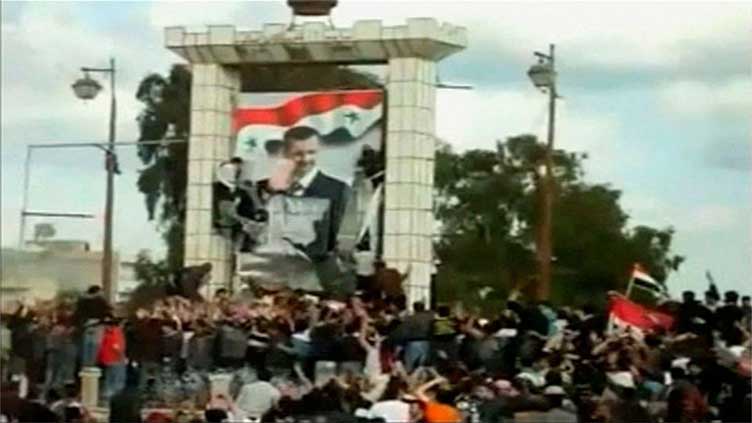Violence in Syria is on the rise while aid is flagging as the civil war enters its 14th year

World
Violence in Syria is on the rise while aid is flagging as the civil war enters its 14th year
AL-NAYRAB, Syria (AP) — For years, Syria’s civil war has been a largely frozen conflict, the country effectively carved up into areas controlled by the Damascus government of President Bashar Assad, various opposition groups and Syrian Kurdish forces.
But as the conflict entered its 14th year on Friday, observers say violence has been on the rise again while the world’s attention is mostly focused on other crises, such as Russia’s onslaught on Ukraine and the Israel-Hamas war in Gaza.
In the village of al-Nayrab in the northwestern, opposition-held enclave of Idlib, Ali al-Ahmad burns olive branches in a stove to keep his partially destroyed house warm.
He has been living in the damaged house, struck in a recent round of shelling by government forces. It’s in better condition than many of the surrounding houses that were reduced to rubble, he says. When a new round of bombing starts, he leaves for a while to stay in one of the nearby displacement camps until the situation calms and he can return and repair the damage.
“We return for a day or two, then they start shelling us,” he said. “We leave for a few days, then return to our village to find our homes destroyed.”
The war, which has killed nearly half a million people and displaced half the country’s pre-war population of of 23 million, began as peaceful protests against Assad’s government in March 2011.
The protests — part of the Arab Spring popular uprisings that spread across much of the Middle East that year — were met by a brutal crackdown, and the revolt quickly spiraled into a full-blown civil war, which was further complicated by the intervention of foreign forces on all sides of the conflict, as well as a rising militancy, first by al-Qaida-linked groups and then the Islamic State group until its defeat in 2019.
Russia, along with Iran, became Assad’s biggest ally in the war, Turkey backed an array of Syrian opposition groups while the United States supported Syrian Kurdish forces in the fight against IS. Israel has carried out airstrikes targeting the Lebanese militant group Hezbollah and Iranian forces in Syria.
Over the years, the battlefields became stalemated in the war-ravaged nation.
The recent surge in violence began with a drone strike on a military academy graduation ceremony in government-held city of Homs in October that killed dozens.
Syrian government and allied Russian forces then launched a bombardment of the opposition-held northwest that hit “well-known and visible hospitals, schools, markets and camps for internally displaced persons,” the commission said.
Elsewhere, increasingly frequent Israeli strikes targeted Iran-linked targets in government-held parts of Syria — attacks that sometimes also hit civilians. Turkey stepped up its attacks on U.S.-backed Kurdish forces in northeastern Syria, while militants from IS sleeper cells have launched sporadic attacks in different parts of the country.
In recent weeks, opposition-held areas have also seen unrest, with protests breaking out in Idlib against the leadership of the al-Qaida-linked Hayat Tahrir al-Sham group that governs the area.
With all the multiple and complex layers of the conflict, there is no resolution of the crisis in sight for Syria.
David Carden, the U.N.’s Deputy Regional Humanitarian Coordinator for the Syria crisis, said during a recent visit to northwest Syria that the U.N.’s humanitarian response plan for 2023, which had appealed for more than $5 billion, only received 38% of the funds sought — the lowest level since the United Nations started issuing the appeals.
“There are 4.2 million people in need in northwest Syria, and 2 million of those are children,” of whom 1 million are not going to school, he said. “This is a lost generation.”
Compounding Syria’s misery was the devastating 7.8 magnitude earthquake on Feb. 6, 2023, that killed more than 59,000 people in Turkey and Syria. Some 6,000 of them were were killed in Syria alone, mainly in the northwest, where most of the 4.5 million people rely on humanitarian aid to survive.
United Nations agencies and other humanitarian organizations have been struggling to fund programs that provide a lifeline in Syria, blaming donor fatigue, the COVID-19 pandemic, and conflicts elsewhere that have erupted in recent years.
The U.N.’s World Food Program, which estimates that over 12 million Syrians lack regular access to food, announced in December that it would stop its main assistance program in Syria in 2024.



